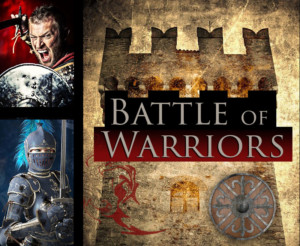If you are thinking of gamifying your Moodle course, Game Designers are way ahead of you in creating fun, engaging “problems” to solve. I always look to the gaming world for inspiration and ideas when I’m starting to gamify a course.
This week’s article is all about 5 classic gaming “types” that you can use to gamify in Moodle. There are DOZENS of different game types but I’ve chosen 5 of the most popular to highlight in this article.
See if one of them sparks your interest, then check out the rest of my blog for articles on how to make it happen!

1. The Hero’s Quest

Purpose: To journey towards a goal
The “hero” in this style of game design can take many forms. The hero can be a rookie earning their detective badge, a scientist unraveling a mystery, or even a cute insect making their way through the “jungle” in a backyard. It doesn’t have to be an epic saga of Shakespearean proportions (although it could be).
How to do it:
The best way to send your learners on a “hero’s journey” is to plan out a storyline that looks like any other story. Think:
- beginning (meeting the character, establishing the problem),
- middle (face a bunch of challenges)
- ending (finishing the journey, earning the badge, curing the virus, finding the treasure).
Start by having students choose a character, then send them off exploring the content … solving the challenges that come along and eventually … completing the course.

2. The Survivor
Purpose: To stay alive
In a survivor type game, there is the built in motivation of time. Even though it’s pretend, our adrenaline gets pumping when we have to solve a problem with the clock ticking.
How to do it:
One classic storyline is for the learner to find themselves trapped in a dangerous place and have to get back home (or be rescued). An astronaut trapped on a far away planet can work through the science course trying to find the way off a distant planet. Each unit brings the astronaut (or shuttle team, for a group project) one step closer to home. Have them earn badges that can be components from the broken shuttle. When they have “fixed” the shuttle they are on their way home.
Watch this for a little inspiration:

3. The Scavenger Hunt
Purpose: To gain knowledge and wealth
This is a very straight forward type of game design. The challenge is set for students to collect a series of objects and when they collect all of them, they win.

How to do it:
I’ve written a great tutorial on how to hide and trigger rewards in this blog article How to Add Easter Eggs To Your Course. Check it out, then dream up a theme and choose the objects they will need to collect.

4. The Project
Purpose: To build something significant
This is where project-based learning and science fairs take center stage. Following an inquiry … building and testing an experiment … creating a new world or city … even novel studies … these can all be gamified, and their stages re-enforced with rewards and game play.
How to do it:
Not only can the badges and progress mechanics be used to help forward momentum through project stages, you can isolate projects into small self contained Moodle courses.
Think of it like this:

In the above example, the main Moodle course is linked to a smaller Moodle course containing only the project. Students enter the main course as usual, but then click over to the “project area” to work on it.
A separate Moodle course provides a more contained environment, allowing better tracking of progress. This is also a great option for teachers who want to add some gamification to their course without having to transform the whole thing.

5. The Fantasy World
Purpose: To experience another life

It’s fun to experience a different world, playing and being creative in a place completely different than our own. Students can live in Shakespearean England, train a dragon, work for an International Spy Agency, battle a warlord and protect the Queen …. the sky’s the limit.
After decorating your Moodle course in the Theme of your new fantasy world, challenge students to create, write or reenact aspects of this new fantasy world … and deepen their learning and engagement as a result.

Now What?
If these inspired you to gamify your course it’s time to dive in! Check out this article on How to Start Gamifying Your Online Course or to go deeper, sign up for my new training course called “Gamify Your Moodle“.
Let me know in the comments below if you have any great ideas to share with our community of Moodlers!

Leave A Comment